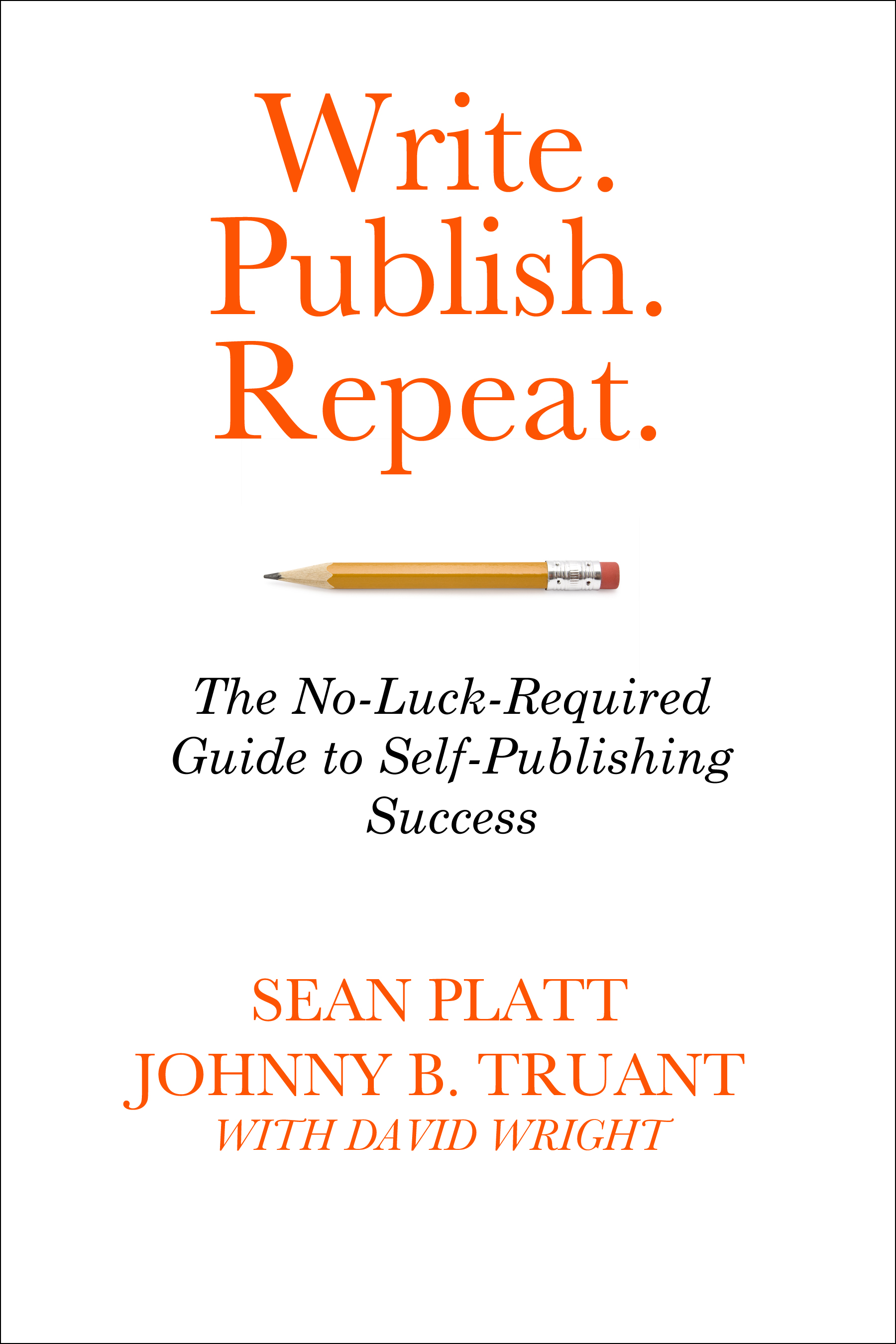The Undeniable Top 10 Digital Publishing Platforms

Why You Should Use The Truant-Platt Publishing System

Prediction: When Self-Published E-books Will Be Top Dog
It doesn’t matter what you want to publish, you’ll need a platform. If you are publishing electronically, then your platform should have a digital publishing component. Fiction writers, poets, and nonfiction writers of all types have the ability (tools, technology, and means) to publish their own content in a variety of formats.
Here is a list of the 10 most powerful digital publishing platforms that any type of writer, and writers from any type of background, can use to put their content into proper form.
The Undeniable Top 10 Digital Publishing Platforms
- A blog – Blogging has been around just long enough to be taken for granted by most serious online content producers. Nevertheless, it’s a powerful publishing platform.A blog can be used for much more than mere marketing. You can use a blog to publish almost anything.Do you write serial fiction? You can publish it on a blog. Writing a memoir? You can post it to your blog. You can also publish poetry, a business book, and even recipes on a blog. Virtually anything you can publish in a print book can be published on a blog – and it can be monetized.
 Newsletter/E-zine – A newsletter need not be in print. Today, it might be more powerful to publish an electronic newsletter. However, most people’s inboxes are littered with unread e-newsletters they have subscribed to. I receive newsletters every day for which I’ve subscribed and have forgotten why. I am not alone.Today’s most valuable newsletters might be those that deliver through paid subscriptions.If your content is informational and has real value, there is no reason why you can’t sell subscriptions, but you must make damn sure your content is worth what your subscribers are paying for it. Otherwise, you will lose your subscribers.
Newsletter/E-zine – A newsletter need not be in print. Today, it might be more powerful to publish an electronic newsletter. However, most people’s inboxes are littered with unread e-newsletters they have subscribed to. I receive newsletters every day for which I’ve subscribed and have forgotten why. I am not alone.Today’s most valuable newsletters might be those that deliver through paid subscriptions.If your content is informational and has real value, there is no reason why you can’t sell subscriptions, but you must make damn sure your content is worth what your subscribers are paying for it. Otherwise, you will lose your subscribers.
Entertainment content is usually delivered via e-zine, short for “electronic magazine.” It’s another format delivered by e-mail and is flexible in that you can deliver a variety of content in one deliverable. Both fictional and nonfictional content can be delivered in this manner, but creators typically use the term “e-zine” for more creative content. The terms are really interchangeable.
Whether you opt to deliver your content through paid subscriptions or provide a free download in exchange for e-mail addresses, an electronic newsletter or e-zine can be a very powerful digital publishing platform.
 PDF document – A PDF document is a flexible document with huge benefits. I do not like them for reading on smartphones and tablets, but they are great formats for delivering informational content and are easy to create.The beauty of PDF documents is that they can be designed to be as attractive as a magazine. The drawback is that they do not afford the reader any flexibility in manipulating the content to be more amenable to the device on which they are reading or to meet the reader’s specific accommodations. As a forerunner to the e-book format, however, they are still adequate in conveying information quickly and concisely. You can even deliver creative content through PDF, however, multimedia content such as videos and podcasts are more challenging.
PDF document – A PDF document is a flexible document with huge benefits. I do not like them for reading on smartphones and tablets, but they are great formats for delivering informational content and are easy to create.The beauty of PDF documents is that they can be designed to be as attractive as a magazine. The drawback is that they do not afford the reader any flexibility in manipulating the content to be more amenable to the device on which they are reading or to meet the reader’s specific accommodations. As a forerunner to the e-book format, however, they are still adequate in conveying information quickly and concisely. You can even deliver creative content through PDF, however, multimedia content such as videos and podcasts are more challenging. E-books – E-books have come of age. There are a variety of e-book formats and each one has its advantages. E-books are powerful in a number of ways. You can sell them or give them away on your own website or deliver them through one of the various e-book distributors online. The rise of Amazon and Smashwords have made e-books all the more powerful and have given digital publishers broader means of distribution.
E-books – E-books have come of age. There are a variety of e-book formats and each one has its advantages. E-books are powerful in a number of ways. You can sell them or give them away on your own website or deliver them through one of the various e-book distributors online. The rise of Amazon and Smashwords have made e-books all the more powerful and have given digital publishers broader means of distribution.- Mobile apps – A format that gaining in popularity is the mobile app. This platform is powerful but limited. While you can read an e-book on a smartphone or tablet, there are times when a smartphone or tablet user might want a digital app instead.Mobile apps can be interactive whereas e-books, like print books, tend to be static. Even with multimedia content, an e-book generally doesn’t allow the user to interact with it, though that is changing. Mobile apps, on the other hand, are inherently interactive. If you want to publish interactive content, mobile apps might be right up your alley.One way that mobile apps are particularly powerful is in taking other content and repackaging it as interactive content. The movie industry is getting very good at this.
- Membership website – Membership websites are gaining in popularity. One reason for this seems to be an increase in free content easily found through search and social channels. The more free content that is delivered, the more the value of free is diminished. Therefore, publishers that have something truly valuable to offer might consider putting their best content behind a pay wall. That’s where membership websites hold a lot of power.The true value in the membership site exists in adding new content periodically. It’s a suitable platform for entertainment as well as informational content.Membership sites also have advantages to other platforms in that your content can be as interactive as a mobile app and you can publish audio and video content alongside your textual content with much ease. It’s almost the perfect digital publishing platform.
 Scribd – Scribd started as a means of text document distribution that allowed e-book publishers and publishers of other textual content an ability to reach a broader audience by providing a place to share and distribute free e-books, PDF documents, and other textual documents. It has since become a sort of digital membership library.I cannot vouch for its current value as a publishing platform because I have not used it in its current form. Its value to readers, however, is in the subscription model – readers can read unlimited books for a flat fee of $8.99 per month.Publishers can publish their books for free and receive a commission based on number of downloads. While your commission per download is not as much as your commission would be if you sold a book on Amazon or one of the other book sellers, you could pick up additional fans that might later purchase your books directly and migrate from borrower of value to owner of value. In that regard, Scribd offers a unique opportunity for digital publishers, especially of textual formats.
Scribd – Scribd started as a means of text document distribution that allowed e-book publishers and publishers of other textual content an ability to reach a broader audience by providing a place to share and distribute free e-books, PDF documents, and other textual documents. It has since become a sort of digital membership library.I cannot vouch for its current value as a publishing platform because I have not used it in its current form. Its value to readers, however, is in the subscription model – readers can read unlimited books for a flat fee of $8.99 per month.Publishers can publish their books for free and receive a commission based on number of downloads. While your commission per download is not as much as your commission would be if you sold a book on Amazon or one of the other book sellers, you could pick up additional fans that might later purchase your books directly and migrate from borrower of value to owner of value. In that regard, Scribd offers a unique opportunity for digital publishers, especially of textual formats.- Web magazine – A web-based magazine is an interactive magazine that can offer free content in an open format such as most websites you’ll find online or through a membership component. The difference between a membership website and a subscription-based Web magazine is that a membership website generally rolls out new valuable content on a regular basis whereas a Web magazine is issue-oriented in the same way that a print magazine is.A Web magazine can be informational in nature or entertainment-oriented. The benefits are the same. Subscribers can look forward to your information each quarter, month, week, or day that it is published.Like a membership website, a Web magazine can publish multimedia content alongside textual content in the same issue. It is usually also available for enjoyment by users on a laptop or desktop PC, smartphone, or tablet. The device is immaterial. The content holds the value. Most publishers would benefit from publishing their magazine on multiple content platforms.
 Like e-books, Web magazines can be published on a variety of systems. WordPress can be used to publish a magazine, and there are plenty of benefits to publishing a Web magazine on WordPress. For starters, you not only own the content you publish, but you also own the real estate on which your content is published. There is a lot of power in owning the content as well as the domain on which the content sits. You will never fear your platform will suddenly disappear or that the rules you live under will change overnight.
Like e-books, Web magazines can be published on a variety of systems. WordPress can be used to publish a magazine, and there are plenty of benefits to publishing a Web magazine on WordPress. For starters, you not only own the content you publish, but you also own the real estate on which your content is published. There is a lot of power in owning the content as well as the domain on which the content sits. You will never fear your platform will suddenly disappear or that the rules you live under will change overnight.Another benefit to publishing with WordPress is the support community that is available to you. Finding a developer for your WordPress magazine website should be easy, and WordPress has a huge library of available magazine themes (both free and premium) to choose from.
Of course, WordPress (free to download) is not the only platform available to publishers who wish to distribute an online magazine. There are several Web magazine hosting websites, as well. The largest of these is ISSUU. Others include
ISSUU is perhaps the largest and most popular of these hosts, but like anything, each has its own advantages and disadvantages. I cannot stress, however, that using a free Web magazine host is less preferable to building your Web magazine on your own domain name with WordPress.
 Twitter – Twitter may seem like an unlikely publishing platform. However, it has already been done with great success. Many creative writers have used it for publishing novels. Some have published nonfiction books. Others have created creative dialogue products with multiple characters interacting with each other on the Twitter stage. Myself, I have been writing three #twitpoem daily for over a year.Granted, with Twitter, you are limited to 140 characters at a time, but it is feasible to publish a full-length product – creative or informational – one sentence at a time. Then, you can expand your audience by publishing your material in other formats.
Twitter – Twitter may seem like an unlikely publishing platform. However, it has already been done with great success. Many creative writers have used it for publishing novels. Some have published nonfiction books. Others have created creative dialogue products with multiple characters interacting with each other on the Twitter stage. Myself, I have been writing three #twitpoem daily for over a year.Granted, with Twitter, you are limited to 140 characters at a time, but it is feasible to publish a full-length product – creative or informational – one sentence at a time. Then, you can expand your audience by publishing your material in other formats. YouTube – YouTube is a video sharing website, but it has come into its own as a digital publishing platform. For one thing, not only can you upload your videos for the world to see, but you can establish a YouTube channel, which acts as your own personal Web TV station.With a YouTube channel, you can reach a broader audience and monetize your video content while you distribute it. You can be as creative as you like and use the format to distribute informational or entertaining content around the Web.
YouTube – YouTube is a video sharing website, but it has come into its own as a digital publishing platform. For one thing, not only can you upload your videos for the world to see, but you can establish a YouTube channel, which acts as your own personal Web TV station.With a YouTube channel, you can reach a broader audience and monetize your video content while you distribute it. You can be as creative as you like and use the format to distribute informational or entertaining content around the Web.
With these 10 powerful digital publishing platforms, you can create all kinds of content in a variety of formats and distribute it to your audience as you grow your publishing business. Wise publishers will seek to publish their content in a variety of formats across multiple platforms.
Contact Allen Taylor or call
717-253-2306


